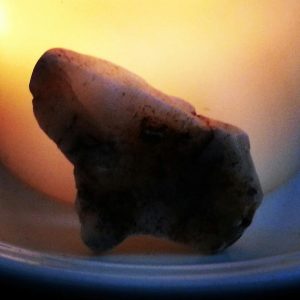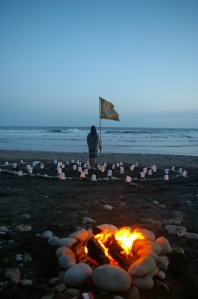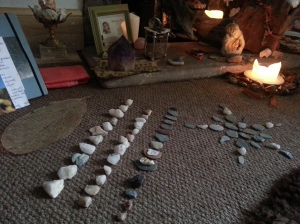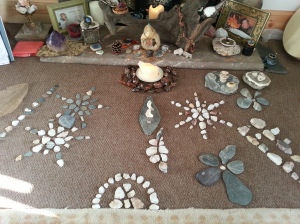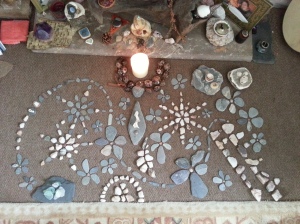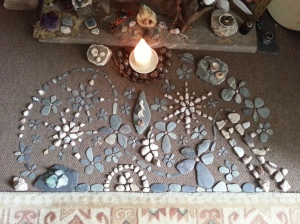An introduction
Here I am, at my computer at last. More that 2 years have passed since the start of my slow landscaping project (scheduled over about 5 years) here at Diarmid on Loch Long, and I think it is time for a first blog post. Tolkien fans, now you know where the entwives have gone, haha. Where to begin? Ah yes. In a hole in the ground… whoops, sorry. We are not in Middle Earth, although there are distinct similarities. It gets difficult to be linear when you are immersed in the rhythms and magic of nature.
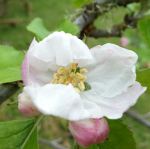
Perhaps a brief introduction. Diarmid on Loch Long is an italianate style house built in Victorian times as a summer lochside residence for a Glaswegian family and is located on the outskirts of Argyll Forest Park, which is part of the fabulous Loch Lomond and Trossachs National Park. It sits in four acres of beautiful Scottish hillside that originally provided an orchard with a chicken coop etc, a kitchen and flower garden, a formal ornamental garden with waterfall on the lower grounds, a summer lookout right at the top, a couple of cottages, a coach house, and an orangerie that was attached to the house.
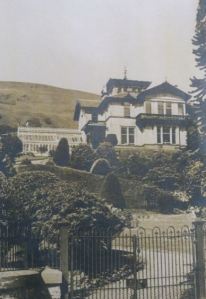
Imagine it as a set for a Victorian costume drama and you get the picture. Ladies in amazing dresses, big paddle steamers, horse-drawn carriages, gin and tonics while watching the boat races on the loch, a drawing room, a morning room and a tower.
Change must have been continuous with the coming and going of several generations, but real darkness befell the estate in the 1970s, when a fire ravaged the house, burnt a massive hole through the middle of it, and dropped the rest of the grand piano that had been in the top tower all the way down into the basement. The building was rescued, but the grounds ceased to be tended and gradually turned into a rather impassable jungle of rhododendron, hazel, sycamore, birch, fallen willows and thorny rootstock gone rampant.
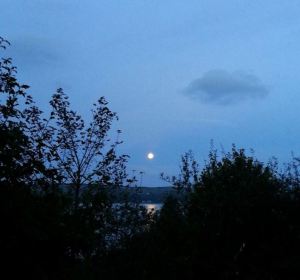
Talk about rewilding! Ancient fruit trees became overcrowded and laden with moss, and were pulled over by the winter storms. Fences and drainage systems crumbled. The summer lookout disintegrated. Nature moved in.
Enter the current generation, a spirited young lady with a grand vision to share this extraordinary place that came into her care and turn it into a magical retreat location. Funding is hard to come by these days, but after more than ten years of determined dedication, immensely hard work, and a willingness to sacrifice personal comforts in pursuit of a big vision, Diarmid has been transformed to become home to Good Shadow Studios, an enchanting and unique retreat space for groups and individuals that has a loch at the bottom of the garden and a forest at the top. Not just the light here is magical.
Efforts over the years to manage the grounds and transform them into something useful included various rounds of selective clear cutting, many a merry bonfire, a loose succession of vegetable patches and the adoption of two orphaned lambs in 2013. Mesmerised by the magic and potential of this place, I arrived with a rough plan to input my energy into regenerating and developing the grounds in 2014. Here’s what emerged as a project outline, as listed in my CV:
“April 2014 – present: 5-year slow landscaping project in Blairmore, Argyll.
Redesign and development of neglected Victorian era hillside grounds for Good Shadow Studios, an evolving retreat centre on the outskirts of the Loch Lomond and Trossachs National Park. The project aim is to create a retreat garden sanctuary, pastoral orchard and woodland environment that will provide a contemplation space for retreat visitors, encourage wildlife, and provide organic produce as well as sustainable heating for the retreat centre. This is an immersive experimental project that fully observes the rhythms of nature. I live on site and am in the process of developing natural structures, defining spaces and designing sculptural features according to permaculture and natural organic principles.”
Slow landscaping, immersive and experimental. And pause… I began by responding to the immediate challenges that mainly originated from our two adolescent sheep and the mountain stream (“burn”) that cuts through the orchard, goes underground, passes by the house, re-emerges as a waterfall in the lower grounds and then goes out into the loch. But mainly I wanted to listen and let this landscape talk to me through the seasons.
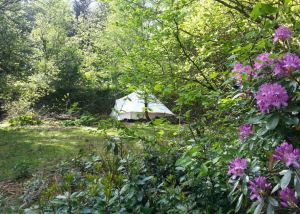
Although I grew up in a similar geological environment in the mountains of Bavaria, Scotland’s west coast offers its own unique conditions. Unlike Bavaria it is at sea level, exposed to weather coming straight from across the Atlantic, very northern in latitude, and has ubiquitous water sources. I set up my bell tent with outdoors cooking area and a log burner at the top of the orchard and moved in.

